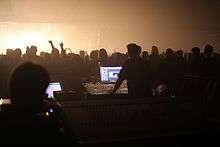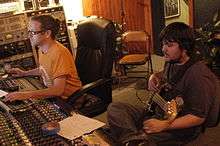Audio mixing

Audio mixing is the process by which multiple sounds are combined into one or more channels. In the process, a source's volume level, frequency content, dynamics, and panoramic position are manipulated and or enhanced. This practical, aesthetic, or otherwise creative treatment is done in order to produce a finished version that is appealing to listeners.
Audio mixing is practiced for music, film, television and live sound. The process is generally carried out by a mixing engineer operating a mixing console or digital audio workstation.
Recorded music

Before the introduction of multitrack recording, all the sounds and effects that were to be part of a recording were mixed together at one time during a live performance. If the sound blend was not satisfactory, or if one musician made a mistake, the selection had to be performed over until the desired balance and performance was obtained. However, with the introduction of multitrack recording, the production phase of a modern recording has radically changed into one that generally involves three stages: recording, overdubbing, and mixdown.[1]
Film and television

Audio mixing for film and television is a process during the post-production stage of a moving image program by which a multitude of recorded sounds are combined. In the process, the source's signal level, frequency content, dynamics and panoramic position are commonly manipulated and effects added.
The process takes place on a mix stage, typically in a studio or theater, once the picture elements are edited into a final version. Normally the engineer will mix four main audio elements: speech (dialogue, ADR, voice-overs, etc.), ambience (or atmosphere), sound effects, and music.
Live sound

Live sound mixing is the process of electrically blending together multiple sound sources at a live event using a mixing console. Sounds used include those from instruments, voices, and pre-recorded material. Individual sources may be equalised and routed to effect processors to ultimately be amplified and reproduced via loudspeakers.[2] The live sound engineer balances the various audio sources in a way that best suits the needs of the event.[3]
References
- ↑ Huber, David Miles (2001). Modern Recording Techniques. Focal Press. p. 321. ISBN 0240804562.
- ↑ "Mixing Principles". Leonard Audio Institute. Retrieved 2013-01-03.
- ↑ Tim Crosby. "How Live Sound Engineering Works". HowStuffWorks. Retrieved 2013-03-03.
Further reading
- Rose, Jay, Producing Great Sound for Film and Video. Focal Press, fourth edition 2014 Book info. ISBN 9780415722070